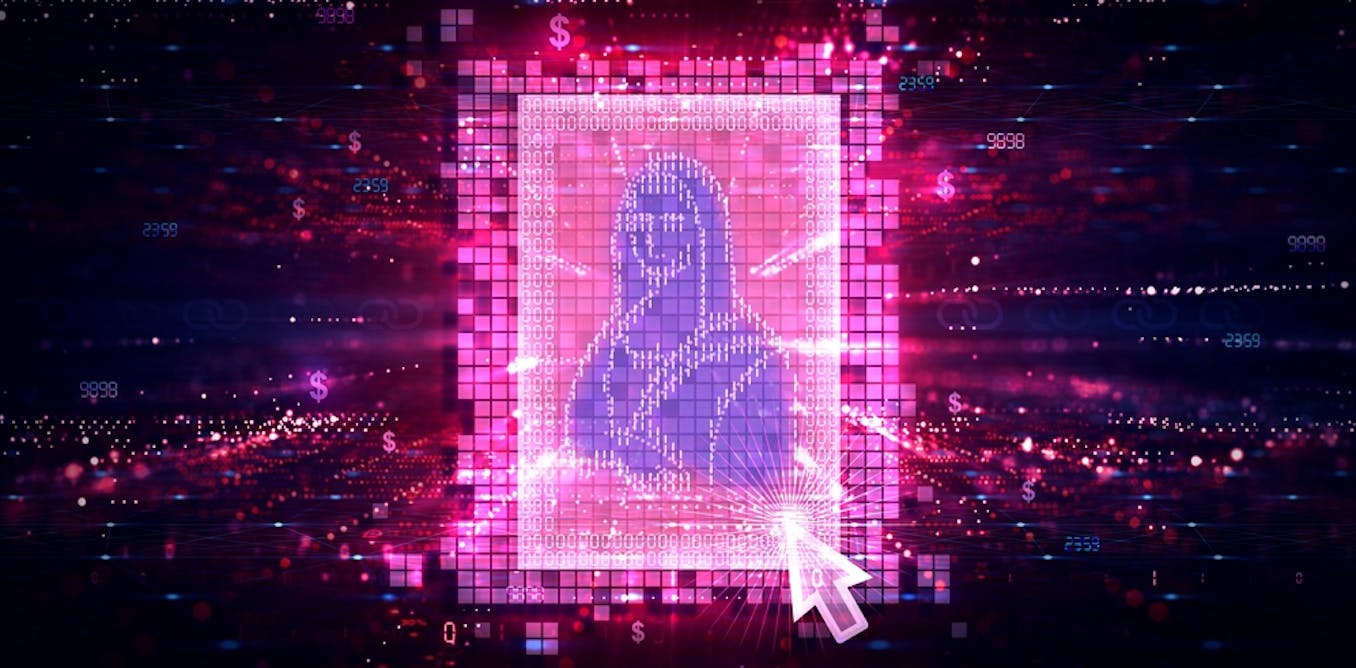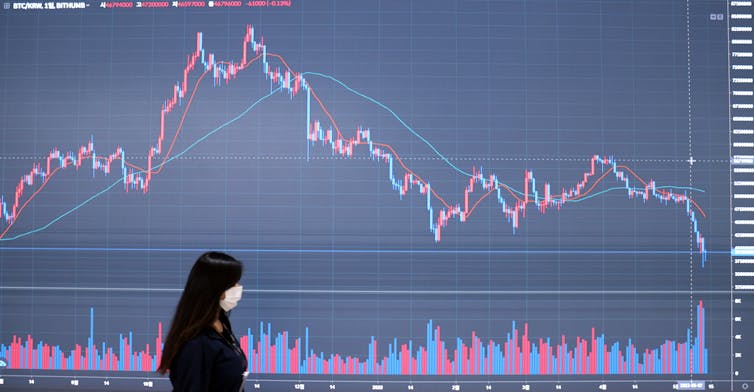Non-fungible tokens (NFTs) are virtual items that constitute one thing else, akin to a murals, a video or perhaps a tweet. They certify the lifestyles and the possession of this merchandise via a knowledge recording on a blockchain (a allotted ledger generation).
Because the emergence of NFTs in 2016, many artists have experimented with this new virtual software to marketplace their creations. NFTs are maximum incessantly purchased and resold by way of public sale websites, the place bills are made in cryptocurrency (akin to ether foreign money). It’s this perception of a certificates registered on a blockchain that distinguishes an NFT from a typical virtual paintings.
The general public and media discourse about NFTs is polarized: within the eyes in their most powerful fans, NFTs constitute the way forward for artwork, whilst their detractors believe them an unlimited ripoff and waste of power.
How can this NFT phenomenon be characterised? To what extent does it problem the established codes of modern artwork?
As a researcher specialised in media research and sociology of tradition, I’m offering a temporary evaluate of the placement.
Contents
Crypto-evangelists and crypto-skeptics
On one hand, there may be the camp that may be described as crypto-evangelists: they adhere to a discourse that provide NFTs as an intensive revolution that can trade the entirety.
That is exactly the discourse surrounding the sensational 2021 sale of a piece by means of the artist Beeple (a collage of vignettes created by means of virtual tool) on the prestigious public sale area Christie’s for almost US$70 million. In step with the two major consumers, the acquisition was once “emblematic of a revolution in development,” and marked “the start of a motion performed by means of an entire era.”
At the different facet, there are the crypto-skeptics. That is the placement of Hito Steyerl, a widely known media artist. She believes that NFTs are the “identical of poisonous masculinity,” and owe their building to “the worst and maximum monopolistic actors” who’re “extracting labour from precarious employees” and “absorb approach an excessive amount of consideration and burn up the entire oxygen within the room.”
This polarization implies that the true possible of NFTs, in addition to their flaws, which might be additionally very actual, have a tendency to be overshadowed by means of caricatured positions of idea. Alternatively, inside this ecosystem of NFTs, there exists a suite of wealthy and plural inventive practices.
Rising ingenious scenes
The NFT layout for sure represents a brand new form of object being traded. It’s in accordance with a brand new form of contract (referred to as “good”), which is itself the results of the innovation of blockchain generation. On this approach, the NFT layout has given upward push to the emergence of a brand new ingenious scene. Or, quite, scenes, within the plural, which might be characterised by means of an ideal effervescence — but in addition by means of positive contradictions.
The “local” scenes of the NFT layout, this is to mention, the ones born with the discovery of this layout, are characterised by means of a robust media visibility, a quantity of far-reaching monetary funding, and, for a few of its actors, a will to reshuffle the playing cards of the artwork global by means of criticizing its status quo.
A big portion of NFT creators come from a convention of three-D modelling, graphic design, animation or online game design — in different phrases, from the ingenious industries sector. In fresh a long time, this sector has generated an excessively massive pool of talents, whose ingenious surplus unearths a style of expression within the NFT layout, but in addition a supply of extra source of revenue to deal with the incessantly precarious stipulations of ingenious paintings.
Many figures of the local NFT scenes are, to make use of the expression of the sociologist Howard S. Becker, outsiders (neophytes) compared to the established artwork global. This is, they socialize in circles as opposed to the ones of the institutional artwork global, and so they transgress its laws in lots of respects.
A extra egalitarian artwork global?
The discourse of the primary shoppers of Beeple’s sensational paintings may be very enlightening on this sense. MetaKovan and Twobadour (two traders of the crypto global, either one of Indian starting place) disclose in an interview:
Now we have been conditioned, from an excessively younger age, to assume that artwork was once now not for us. …Now we have at all times been in opposition to the theory of exclusivity. The metaverse is all inclusive. … A metaverse by which everybody could have the similar rights, powers, shall be reputable. … It’s specifically egalitarian.
Alternatively, there are main contradictions between the discourse of egalitarianism they’re advocating right here, and its implementation within the initiatives of those two traders. As an example, all the way through the technological artwork tournament Dreamverse that they arranged in New York in 2021, the cost of admission to the night various between US$175 and $2,500 — an unaffordable value for plenty of amateurs. This hierarchy of costs leads, quite, to the copy of a common sense of exclusivity that favours probably the most lucky.
Museums are wary
The distance between the marketplace price of NFTs and their price in museums is exceptional. The previous is achieving exceptional heights, whilst the latter continues to be at all-time low. Certainly, the number of NFT by means of museums stays, to at the moment, an excessively marginal observe. Just a handful of NFTs are built-in into museum collections. A few of them are got following an exhibition in a museum, the place they’re offered on virtual displays hung at the wall.
Cultural legitimacy is suffering from the disintermediation (removing of intermediaries) and reintermediation (creation of recent intermediaries) that symbolize the arena of NFTs. In its disruptive impulse, the proclaimed revolution of NFTs cuts itself off from a series of well-established, reputable intermediaries — the gallery homeowners, curators, artwork critics, typical creditors and public subsidies.
It has changed them with new intermediaries, basically “whales” — traders who’ve made a fortune in cryptocurrency — or pop culture celebrities. Those new intermediaries overinvest in monetary capital within the manufacturing of NFTs with the purpose of gaining a place of status as a collector, or to complement themselves by means of expanding the price of works. However they incessantly lack the social and cultural capital to have the ability to get entry to museums and their exhibition areas and their collections.
Searching for legitimacy
Alternatively, those works are publicly available, as all NFTs are freely searchable on their consumers’ e-wallets. Some creditors purchase works best to invest. Others achieve visibility by means of showing their NFTs in a metaverse (a digital global) akin to Decentraland or House.
And for others, nonetheless, the search for legitimacy is going additional: within the spring of 2022, a gaggle of artists, curators, creditors and NFT platforms arranged a Decentral Artwork Pavilion, in parallel to the Venice Biennale. Final out of doors the respectable program, the exhibition aimed to put NFTs within the orbit of this key fresh artwork tournament.
However the presence of NFTs remained marginal on this version of the biennial. Best the Cameroon pavilion exhibited NFTs below the management of a curator with a shady recognition, and the end result was once disappointing.
The popularity of the NFTs by means of the consecrated artwork global will possibly come about by means of different avenues, just like the extra experimental practices offered on the documenta artwork exhibition in Kassel, Germany this 12 months, or via inventive actions from growing international locations, just like the Balot venture, which used an NFT to criticize the appropriation of a piece originating from the Republic of the Congo by means of an American museum.
So popularity may just come throughout the margins. However in those instances, the marginal avid gamers may just extra simply get entry to the established artwork global as a result of they proportion its codes.
Supply Via https://theconversation.com/nfts-in-the-art-world-a-revolution-or-ripoff-191299



